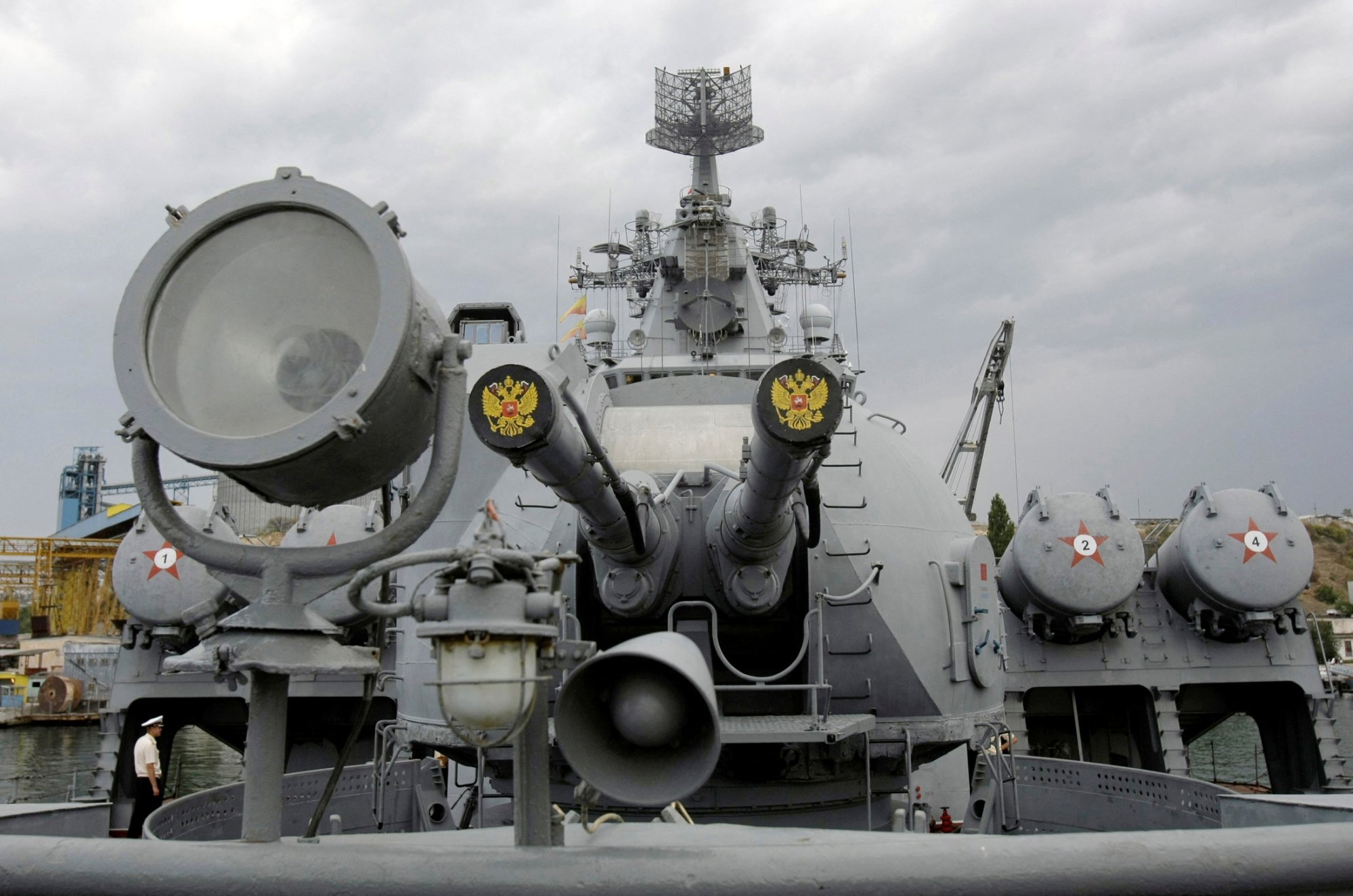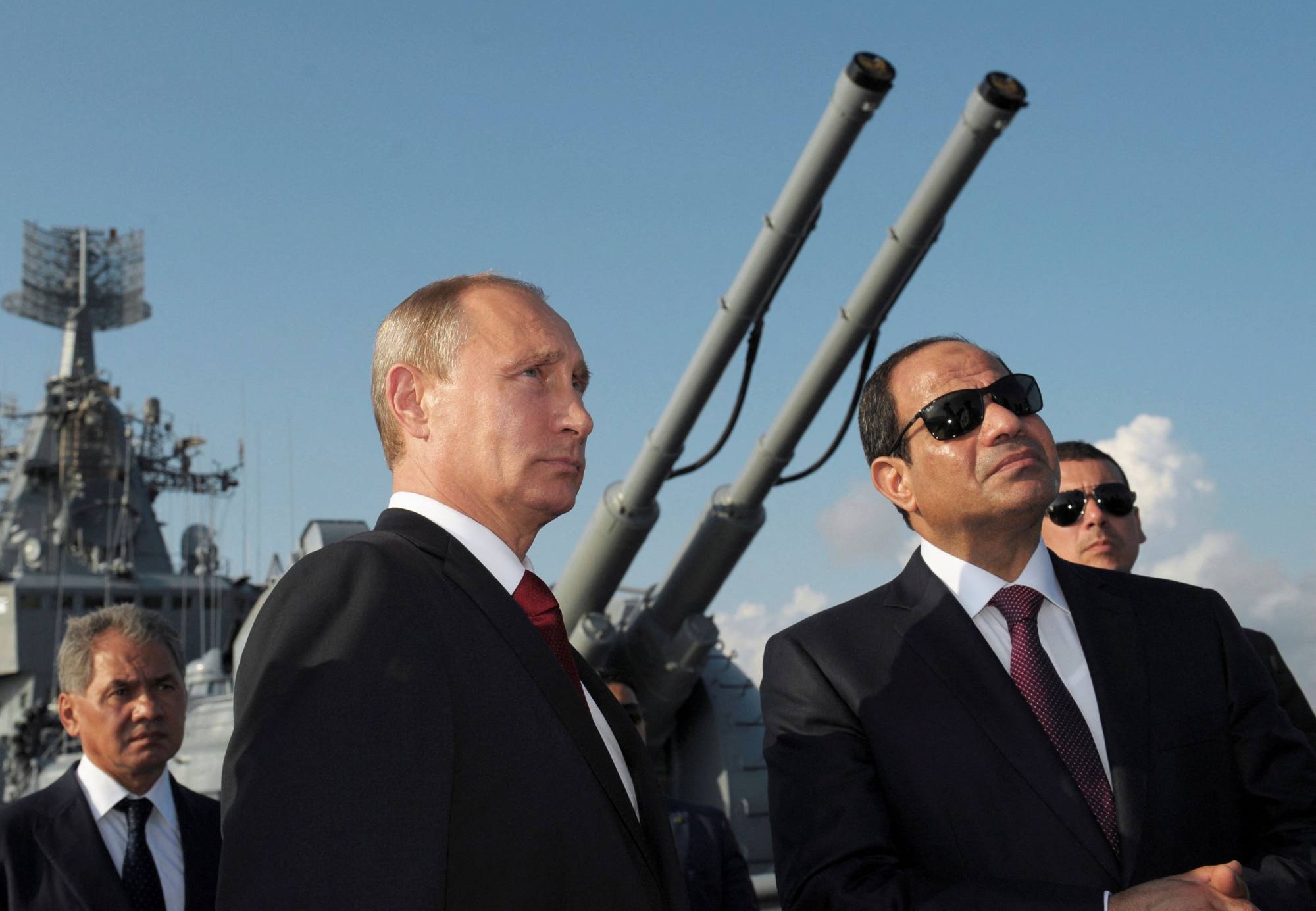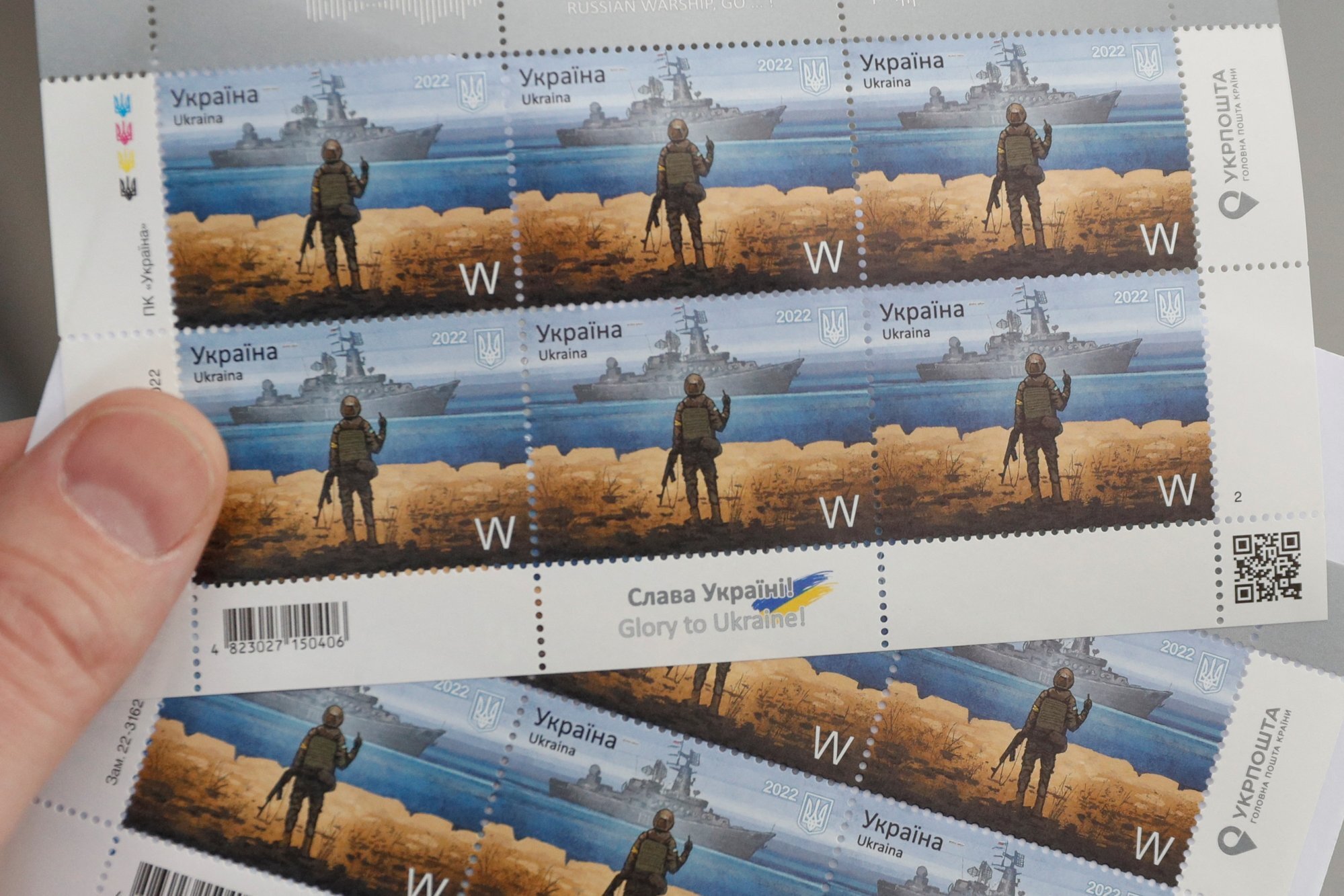
Ukraine war: Russia says Moskva flagship has ‘sunk in storm’ after fire on board
- The vessel that went viral as the ‘Russian warship’ in the Snake Island incident suffered major damage, possibly from Ukrainian Neptune missiles
- Its removal from combat greatly reduces Moscow’s firepower in the Black Sea and strikes a major blow to Russian prestige
The Russian military said on Thursday that the flagship of its Black Sea fleet sank while being towed to a port after being badly damaged.
The Moskva, named in honour of the Russian capital, was launched during the Cold War, saw service during conflicts in Georgia, Syria and Ukraine, and helped conduct peacetime scientific research with the United States.
The sinking was an inglorious demise for the vessel initially christened the Slava, or “glory”.
What happened to the warship?
The Russian Defence Ministry said the heavily damaged Moskva sank in a storm Thursday under tow after being gutted by fire. It previously said the blaze set off some of its weapons and forced the crew to evacuate. It denied there had been an attack by Ukraine on the ship, which would normally have about 500 sailors aboard.
Maksym Marchenko, the governor of the Odesa region, said Ukraine struck the ship late on Wednesday with two Neptune missiles and caused “serious damage”. Yuriy Sak, an adviser to Ukraine’s defence minister, later said he was unable to confirm its fate or if it even had been hit by Ukrainian forces.

It was not immediately possible to reconcile the different accounts, and cloud cover made it impossible to locate the ship or determine its condition from satellite photos. The US was unable to confirm Ukraine’s claims.
The Moskva was about 111km (69 miles) due south of Odesa when the fire occurred, according to a senior US defence official who spoke on condition of anonymity to discuss internal US military assessments.
What was the warship’s capability?
The Moskva could carry 16 long-range cruise missiles, and its loss will greatly reduce Russia’s firepower in the Black Sea.
Its sinking represents a major blow to Russian prestige seven weeks into a war that already is widely seen as a historic blunder.
What was its history?
It was launched as the Slava from a shipyard in Mykolayiv in what was then the Soviet republic of Ukraine in July 1979, according to open-source intelligence firm Janes. Commissioned in late December 1982, it was 186 metres (611.5 feet) long. It was designed to carry a crew of 476 with an additional 62 officers.
The Slava served as the flagship of the Soviet fleet in the Black Sea. It carried both surface-to-surface and surface-to-air missiles, deck guns, torpedoes and mortars. It also had a helicopter deck.
During the Cold War, it also carried nuclear weapons. In 1989, under Soviet leader Mikhail Gorbachev, US and Soviet scientists took part in a joint test abroad the Slava in the Black Sea to measure the emission of neutrons and gamma rays from a nuclear warhead on a cruise missile.
In late 1989, the Slava was supposed to host a meeting off Malta between Gorbachev and then President George H.W. Bush, but gale force winds prompted the Soviet-hosted side of the talks to be held instead on the docked cruiser Maxim Gorky.
From Slava to Moskva
The Slava underwent repairs from 1990-1999. During that time, the Soviet Union collapsed, an independent Ukraine emerged and Russia’s economy foundered. Finally overhauled and rechristened the Moskva, the ship hosted both Putin and then-Italian Premier Silvio Berlusconi during a 2003 visit to Sardinia.
“Thank God, our cruisers can still go on their own, our planes and missiles can fly,” Putin said at the time.

Putin’s later comments at the La Maddalena naval base show how much has changed. He described the Moskva’s presence as a sign that “the level of trust between Russia and the Nato countries is rising”. Nato’s eastward expansion and Russian security were among the reasons Putin cited for sending troops to Ukraine.
During Russia’s war in its former republic of Georgia in 2008, the Moskva took part in operations in the Black Sea, and Georgia said it was involved in an attack on the country.
In 2014, as Russia annexed the Crimean Peninsula, the Moskva blocked Ukrainian naval vessels from leaving Lake Donuzlav.
In 2015-16, it was deployed to the Mediterranean Sea to provide support for the Russian military campaign backing Syrian President Bashar al-Assad in his country’s civil war. Its sailors were decorated for their service there and in the war on Georgia.
The Moskva underwent repairs and modernisation from 2018 to July 2020, according to Janes.
After Russia invaded Ukraine on February 24, the Moskva took part in an attack on Zmiinyi Island – or Snake Island – which sits about 35km (21 miles) off the country’s coast.
In an audio widely circulated online, a Ukrainian soldier responds “Russian warship, go f*** yourself,” spawning a series of Snake Island memes.

The Associated Press cannot independently verify the incident, but Ukraine and its supporters consider it an iconic moment of defiance.
On Wednesday, Ukrainian President Volodymyr Zelensky’s Instagram account posted a photo of him holding commemorative stamps marking the purported moment.
They show a lone Ukrainian soldier on a beach, rifle in one hand, the other giving the middle finger to the passing Moskva, its “121” ship number visible on it.

